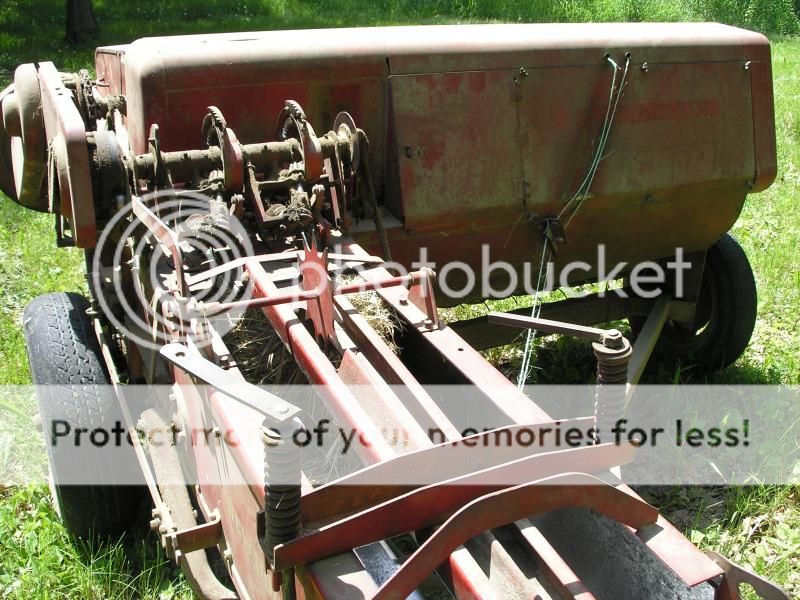Bryce Frazier
Well-known Member
Well, my baler came home this evening (NH 68 Hayliner). Dad brought me home a box of 9600 Poly, Orange, 170 T Twine. There are two 4800 foot rolls in the box, if my math is correct, BOTH rolls should make a total of about 500 bales? Maybe a little less?
Any way, here is the skinny:
My NH Manual (yes it does help to buy one... ) says to run the twine from the box, through the little tubes in the sheet metal, down under the bale chute to a white plastic eye thing, and then through the needles. Here is the question, after going through the plastic white eye thing under the chute, it says to go UNDER the "needle shield" and then through the hole in the needles, and then tie off the the frame, but I don't know which side of the needles to go through!!! So, should I go through them from the chute end, or the engine end?
) says to run the twine from the box, through the little tubes in the sheet metal, down under the bale chute to a white plastic eye thing, and then through the needles. Here is the question, after going through the plastic white eye thing under the chute, it says to go UNDER the "needle shield" and then through the hole in the needles, and then tie off the the frame, but I don't know which side of the needles to go through!!! So, should I go through them from the chute end, or the engine end?
Another question: Each of the rolls of twine has ONE loose string, it appears to come out of the middle of the roll, over the edge of the roll, and then it looks like it starts wrapping around the outside of the roll, but there is plastic around it and I can't see it??
1. Do I cut this string and use the end that is in the center of the roll, or do I just pull the twine until and end that I can't currently see comes out from the outer edge of the roll?
2. Do I cut the plastic off of it, or just leave it on? By the looks of the roll I assume just leave it, but I am a rookie and just had to ask!
Thanks for any help. Tomorrow I am going to get a little garbage loose hay from the neighbors and run it through the baler to see if it works, and if it does, then I will go to town mowing my little meadow! Thanks again, Bryce
Any way, here is the skinny:
My NH Manual (yes it does help to buy one...
Another question: Each of the rolls of twine has ONE loose string, it appears to come out of the middle of the roll, over the edge of the roll, and then it looks like it starts wrapping around the outside of the roll, but there is plastic around it and I can't see it??
1. Do I cut this string and use the end that is in the center of the roll, or do I just pull the twine until and end that I can't currently see comes out from the outer edge of the roll?
2. Do I cut the plastic off of it, or just leave it on? By the looks of the roll I assume just leave it, but I am a rookie and just had to ask!
Thanks for any help. Tomorrow I am going to get a little garbage loose hay from the neighbors and run it through the baler to see if it works, and if it does, then I will go to town mowing my little meadow! Thanks again, Bryce


